Discover the enchanting world of Inuit children's fables and how they teach important moral lessons. Dive into the captivating stories and traditions of the Inuit and Eskimo cultures and their reach heritage that comes through in their oral traditions and Language. At the bottom of this post, we'll list out the books that we'll be using over the course of the month to teach our children about Inuit culture, history and fables....
The Importance of Children's Fables in Inuit Culture
Inuit culture holds a deep appreciation for the power of children's fables. These stories play a vital role in passing down important values and teachings from one generation to the next. They serve as a means of education and entertainment, captivating young minds and instilling valuable life lessons.
Inuit children's fables are often shared orally, allowing for a sense of communal storytelling. This communal aspect of sharing fables strengthens the bond between generations and helps to preserve the rich cultural heritage of the Inuit people.
Through children's fables, Inuit culture promotes imagination, creativity, and critical thinking skills. They encourage children to explore their surroundings, observe the natural world, and develop a deep connection with their environment. Inuit fables often incorporate elements of nature and animals, providing a strong foundation for understanding the world and developing respect for all living beings.
The Role of Animals in Inuit Children's Fables
Animals play a significant role in Inuit children's fables, serving as important characters and symbols. Inuit culture holds a deep reverence for the natural world and the animals that inhabit it. Through fables, children learn to respect and appreciate the interconnectedness of all living beings.
Inuit fables often anthropomorphize animals, giving them human-like qualities and characteristics. This allows for a deeper understanding of the animal's role within the story and the moral lesson it conveys. Animals in Inuit fables symbolize various virtues and values, such as wisdom, bravery, and resilience.
By using animals as central figures in their fables, Inuit culture teaches children about the importance of empathy, compassion, and the consequences of their actions. These animal characters serve as powerful teachers, guiding children towards making ethical choices and understanding the impact of their decisions on others.
Teaching Values and Moral Lessons through Inuit Children's Fables
Inuit children's fables are not merely entertaining stories; they are powerful tools for teaching values and moral lessons. These fables often revolve around themes such as honesty, cooperation, kindness, and respect for nature.
Through captivating narratives and relatable characters, Inuit fables provide children with practical examples of how to navigate various situations and make virtuous choices. These stories instill important values that serve as a foundation for ethical behavior and decision-making throughout their lives.
Inuit culture believes that by teaching moral lessons through fables, children develop a strong sense of cultural identity and a deep understanding of their responsibilities towards their community and the natural world. These fables serve as guides, imparting wisdom and knowledge that can be applied to everyday life.
Exploring Common Themes in Inuit Children's Fables
Inuit children's fables often explore common themes that are central to the Inuit culture. These themes include the importance of harmony with nature, the value of community and cooperation, the significance of storytelling, and the celebration of cultural heritage.
Nature is a prevalent theme in Inuit fables, with animals and elements of the natural world taking on symbolic meanings. These fables teach children to respect and live in harmony with nature, emphasizing the interconnectedness of all living beings.
Community and cooperation are also prominent themes in Inuit fables, highlighting the importance of working together and supporting one another. These stories emphasize the strength and resilience that can be found in unity and collective effort.
Inuit culture places great value on storytelling as a means of passing down knowledge and preserving cultural traditions. Many fables emphasize the importance of storytelling, encouraging children to listen, learn, and share their own stories.
Lastly, Inuit children's fables celebrate the rich cultural heritage of the Inuit people. These stories serve as a reminder of the traditions, customs, and values that have been passed down through generations, ensuring that they are not forgotten and continue to shape the identity of the Inuit community.
Preserving Inuit Children's Fables for Future Generations
Preserving Inuit children's fables is of utmost importance to ensure that future generations can continue to benefit from the valuable teachings and cultural heritage embedded within these stories.
Efforts are being made to collect and document Inuit fables, both in written and oral forms, to ensure their preservation. This includes collaborating with elders and community members to capture their knowledge and stories, as well as creating resources for schools and educational institutions to incorporate Inuit fables into their curriculum.
By preserving Inuit children's fables, we can ensure that the wisdom, values, and cultural identity they carry will be passed on to future generations. These fables serve as a bridge between the past and the present, connecting young minds with the rich traditions and teachings of the Inuit and Eskimo cultures.
Reading List for the Month
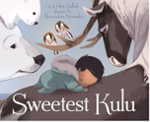 Sweetest Kulu - In this beautifully illustrated children’s book, baby Kulu is presented with gifts from various Arctic animals. For example, Arctic char gifted the newborn with tenderness, while the seal gifted creativity and colour. Written by acclaimed throat singer Celina Kalluk, this book teaches about Inuit values and about appreciation for all the land has to offer.
Sweetest Kulu - In this beautifully illustrated children’s book, baby Kulu is presented with gifts from various Arctic animals. For example, Arctic char gifted the newborn with tenderness, while the seal gifted creativity and colour. Written by acclaimed throat singer Celina Kalluk, this book teaches about Inuit values and about appreciation for all the land has to offer.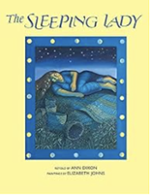
The Sleeping Lady - To many people who gaze across Cook Inlet from Anchorage, Alaska, Mount Susitna looks like a slumbering woman. The Sleeping Lady is a modern-day folk legend that accounts for both Alaska's first snowfall and for the origin of this beautiful mountain. It is also a classic tale about a time of peace and the consequences of war.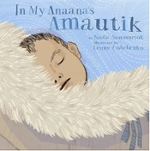
In my Anaana's Amautik - An amautik is a fur parka worn by women with a built-in pouch just below the hood to carry a baby or toddler. Children up to two years of age stay warm and cozy with their mamas (anaana). In this story, the child carried in his or her mother’s amautik feels loved and warm.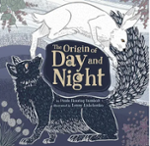
The origins of day and Night - In this Inuit tale, the actions of a hare and a fox change the Arctic forever by creating day and night. In very early times, there was no night or day and words spoken by chance could become real. When a hare and a fox meet and express their longing for light and darkness, their words are too powerful to be denied. 
The Shaman's Apprentice - Inspired by award-winning Inuk director Zacharias Kunuk’s short film of the same name, The Shaman’s Apprentice tells the story of a young shaman in training who must face her first test―a trip to the underground to visit Kannaaluk, The One Below, who holds the answers to why a community member has become ill.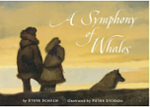
A symphony of Whales - Glashka can . . . but with that mysterious power comes great responsibility. When she discovers thousands of whales trapped in a rapidly freezing inlet, she knows it is up to her to gather the people of her town to help them. Based on an actual event, this inspiring story follows Glashka and her people as they come to understand the importance of all life.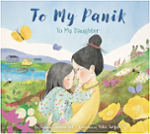
To My Panik - In this lovingly told book, a mother recounts for her daughter all the things she loves about her, connecting each attribute to an element of the Arctic landscape or Inuit traditional life. As her daughter’s eyes glisten like the fire of an oil lamp, and her courage shines bright like buds of purple saxifrage fighting through a thick blanket of snow, the mother weaves a beautiful narrative of connection and love that will warm the hearts of all readers.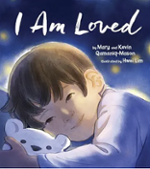
I am Loved - Pakak is in a new foster home, with new people, new food, and new smells. Feeling alone and uncertain, Pakak finds comfort in a secret shared with him by his anaanattiaq, his grandmother, and in the knowledge that he is loved no matter how far away his family may be. Written as a gift for Inuit children in care by foster parents Kevin and Mary Qamaniq-Mason, this book is lovingly imbued with cultural familiarities that will resonate with children who, like Pakak, are navigating the unknown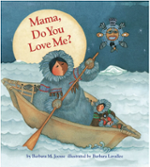
Mama Do You Love Me? Mama, Do You Love Me? is the classic story of a child testing the limits of her independence and a mother's reassurance that a parent's love is unconditional and everlasting. Now in a lovely board book edition, this tender and reassuring book is one that both parents and children will turn to again and again. 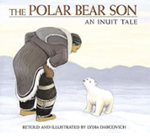
The Polar Bear Son - A lonely old woman adopts, cares for, and raises a polar bear as if he were her own son in this retelling of a traditional Inuit folktale. When jealous villagers threaten the bear's life, he is forced to leave his home and his "mother."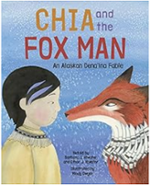
Chia and the Fox Man - Life is hard for Chia. His village doesn’t have enough food and every day there are many chores to do. Chia always goes to bed hungry and tired, until one day in the middle of the night he wakes to a strange noise. He decides to investigate―and meets the legendary Fox Man. Will the Fox Man be able to help Chia and his village?

09-Feb-2024 13:36:34
Related Articles





Write a Comment